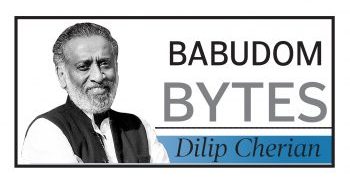India’s major economic reforms were spurred by a foreign exchange crisis. It was the summer of 1991 when foreign exchange reserves went to nearly zero. An emergency loan from the IMF was taken, and a slew of reforms were initiated. Exchange rates, import duties and banking were deregulated, and foreign direct investment was permitted. The biggest bang reform was the end of the license raj in manufacturing and industrial production. Economic growth picked up, and foreign investment poured in. The IMF loan was repaid in less than two years. The stock market and capital markets took off. Ten years later, a second generation of reforms was unleashed in the telecom and power sectors. This, too, led to remarkable growth and dynamism. To this day, we are reaping the harvest of the telecom revolution, which is still unfolding.
The economy is now more than ten times bigger than in 1991. India is a software powerhouse in the world. But one big promise of the 1991 reforms remains unfulfilled. If the biggest bang was industrial delicensing, then we should have seen the manufacturing sector grow exponentially. It did grow, but only at the same pace as the GDP. The share of manufacturing in India’s GDP is roughly the same in 2025 as in 1991, around 16 or 17%. The aspiration is to reach at least 25% of the GDP as per the National Manufacturing Policy, the Competitiveness Project, and even Make in India. But manufacturing is stubbornly stuck, and as a result, industrial employment also has not taken off. The share of formal employment, i.e. those who are covered by a contract and get pension and health benefits ts is a stagnant share of the total workforce. For India to achieve higher levels of aggregate growth and jobs with higher productivity and wages, it is essential that industrial jobs grow in a big way. We cannot achieve 8 or 9% growth without vigorous industrial growth.
The popular view is that archaic labour laws have held back massive industrial employment creation. Especially in labour-intensive sectors like textiles, footwear, toy-making, and electronics assembly, we have not been able to build scale in manufacturing, as businesses hesitate to hire workers on a large scale. The labour reforms we needed relate not only to ease of recruitment at scale and retrenchment, but also to the formalisation of labour markets. Since labour is in the concurrent list of the Constitution, respective state governments too have to be on board with the reform agenda. The unions, too, have to be part of the consensus.
The Union government embarked on this ambitious journey five years ago. That journey reached a historic milestone. On 21 November, India formally brought into effect its four Labour Codes—the Code on Wages (2019), Industrial Relations Code (2020), Code on Social Security (2020), and Occupational Safety, Health and Working Conditions (2020)—replacing 29 central labour laws that had accumulated piecemeal over the past seven decades. The notification marks the culmination of a reform process initiated in 2015, with years of tripartite consultation and delay due to states’ rule-making responsibilities under the Constitution. This landmark reform will reduce compliance burdens, widen social protection, and make the labour market more responsive to a changing economy. The respective states of India must now pass their own rules and regulations to ensure the four labour codes are fully implemented within their jurisdictions.
These four codes are meant to protect labour, to provide flexibility to employers, to formalise the workforce, and also to spur job creation. For employers, the new regime promises ease of compliance: a single registration, licence, and return instead of dozens; higher thresholds for layoffs and closures; and fixed term employment enabling time-bound hiring. For workers, it offers wider protection: a national floor wage, written appointment letters, health and safety coverage, maternity and provident-fund benefits for gig, platform, and contract labour.
In short, the Codes try to replace the rigid dualism of India’s labour market—where a small formal segment enjoys heavy protection and elite status, while the vast informal majority has none—with a continuum of graded protections linked to digital identity and compliance. This continuing and entrenched dual structure, called “casualisation of labour” has sometimes had an ugly and violent manifestation, endangering social stability and harmony too. There is a great step to enable better participation of women in the formal workforce. Some of the features of the reforms are that all workers must now receive appointment letters, ending in formal oral contracts. There is universal social security extended to gig and platform workers, with aggregators contributing 1–2% of turnover to welfare funds. Women may work night shifts in all sectors, including mining and IT, provided safety measures are assured.
We must remember, however, that these labour reforms do not automatically imply a dynamic and growing labour market. Employment generation depends on far more than labour laws. The unemployment challenge arises from skills mismatch, inadequate infrastructure, rigid land markets, and policy uncertainty as much as from labour regulation. The new Codes can reduce transaction costs, but cannot ,by themselves, create demand for labour. This is because large-scale job creation also requires (a) Human-capital development: expansion of apprenticeship programmes, and skill-certification; (b) improvement in infrastructure, logistics, efficient transport, reliable power and digital networks; (c) predictable taxation, faster dispute resolution, and simplified compliance across all regulatory fronts—not just labour. Without these enablers, easier hiring and firing may only formalise precarious jobs rather than expand stable employment.
Yet laws alone do not create jobs. A dynamic labour market does. And so does a workforce equipped with human capital for 21st century. India’s employment renaissance will depend on skills, investment, and productivity growth as much as on codified rights. If this reform is accompanied by parallel investments in education, skilling, infrastructure, and enterprise support, it could indeed become the cornerstone of inclusive growth.
The writer is a noted economist. ©THE BILLION PRESS






































